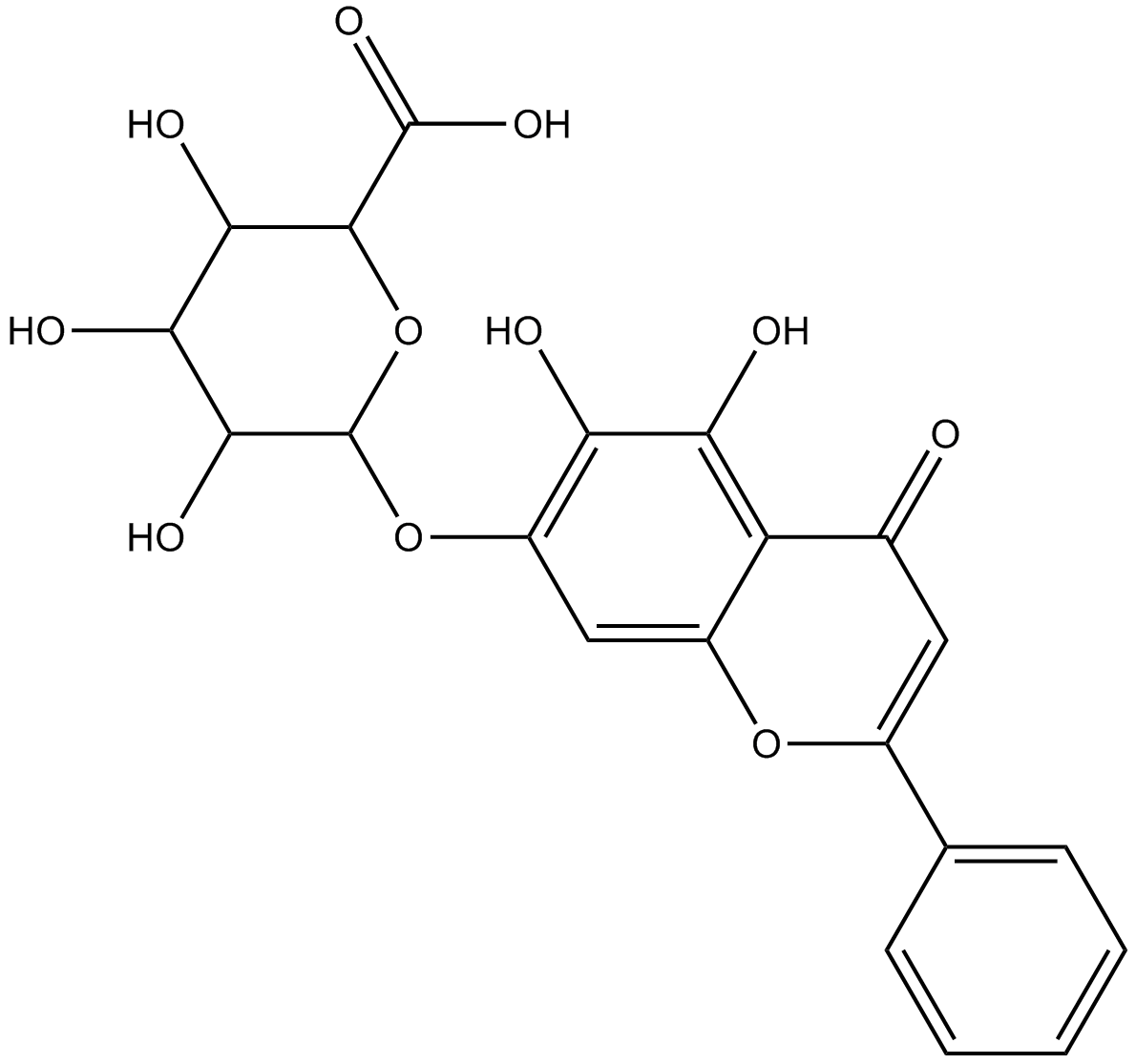Baicalin (Synonyms: Baicalein 7-glucuronide) |
| Catalog No.GN10018 |
A flavonoid with diverse biological activities
Products are for research use only. Not for human use. We do not sell to patients.

Cas No.: 21967-41-9
Sample solution is provided at 25 µL, 10mM.
Baicalin is a flavonoid glycoside isolated from Scutellaria baicalensis. Baicalin reduces the expression of NF-κB.
Baicalin protects against ischemia-reperfusion injury (IRI) by altering the production of various mediators, including reactive oxygen species (ROS), Toll-like receptor (TLR)2 and TLR4, NF-κB, Bax, and Bcl-2. Baicalin treatment inhibits the increased expression of the proinflammatory cytokines TLR2/4, MyD88, p-NF-κB, and p- IκB, as well as increase the expression of IκB protein, an NF-κB inhibitor, with the degree of inhibition positively related to the dosage of Baicalin[1]. Cell viability is determined by MTT assay. Compared with control cells, cell viability is significantly decreased in SH-SY5Y cells treated with thrombin. Pre-treatment with Baicalin (5, 10, 20 μM) increases cell viability in a dose-dependent manner compared with cells treated thrombin alone[2].
Baicalin pretreatment dose-dependently protects against a loss of renal function, with the two higher doses (10 and 100 mg/kg) significantly decreasing Scr and blood urea nitrogen (BUN) concentrations. Tissue injury, as assessed using a 0-3 point scoring system, is lower for the Baicalin treated groups than for the ischemia-reperfusion (IR)+saline group. Compared with the sham group, malondialdehyde (MDA) content is only slightly up-regulated and the SOD activity is only slightly down-regulated in rats treated with 10 and 100 mg/kg Baicalin, indicating that Baicalin abrogates the increase in oxidative stress following reperfusion[1].
References:
[1]. Lin M, et al. The protective effect of Baicalin against renal ischemia-reperfusion injury through inhibition of inflammation and apoptosis. BMC Complement Altern Med. 2014 Jan 13;14:19.
[2]. Ju XN, et al. Baicalin protects against thrombin induced cell injury in SH-SY5Y cells. Int J Clin Exp Pathol. 2015 Nov 1;8(11):14021-7.
Average Rating: 5 (Based on Reviews and 30 reference(s) in Google Scholar.)
GLPBIO products are for RESEARCH USE ONLY. Please make sure your review or question is research based.
Required fields are marked with *




